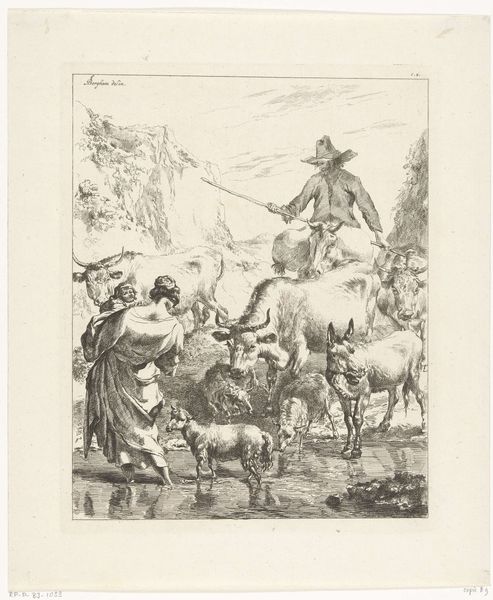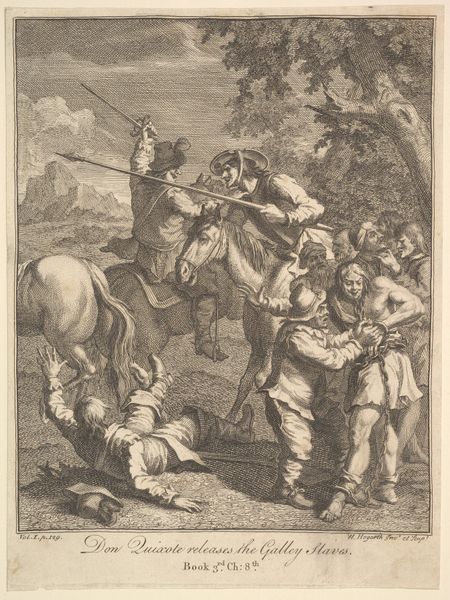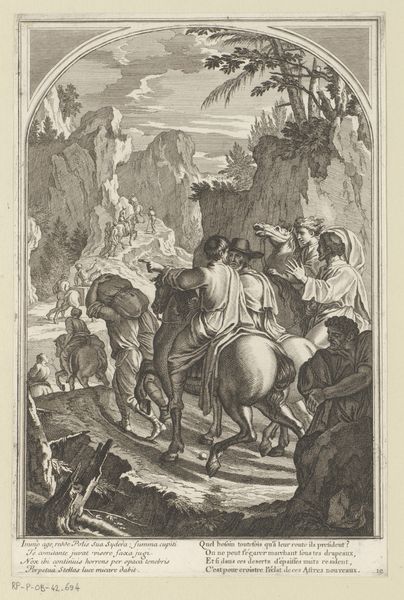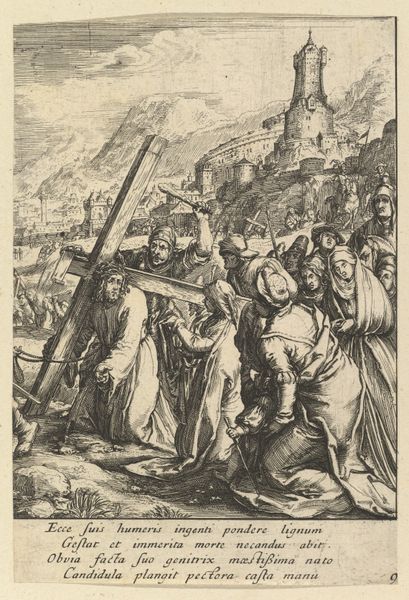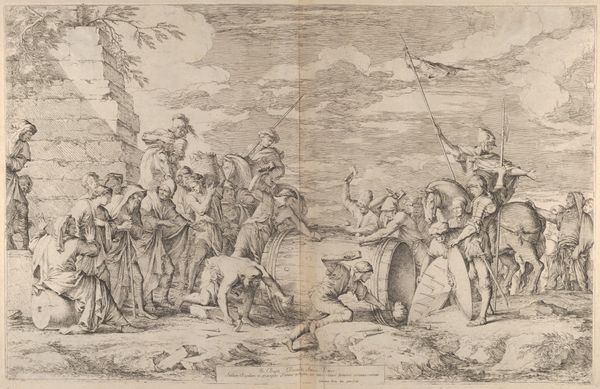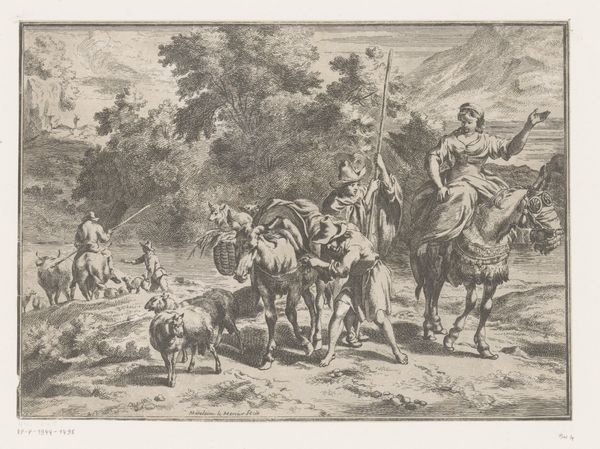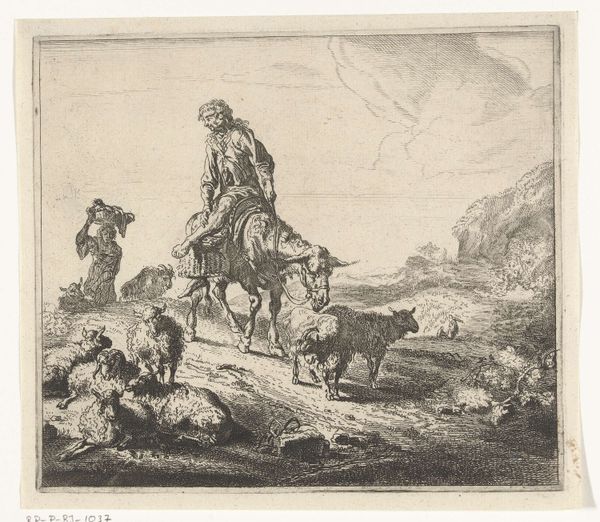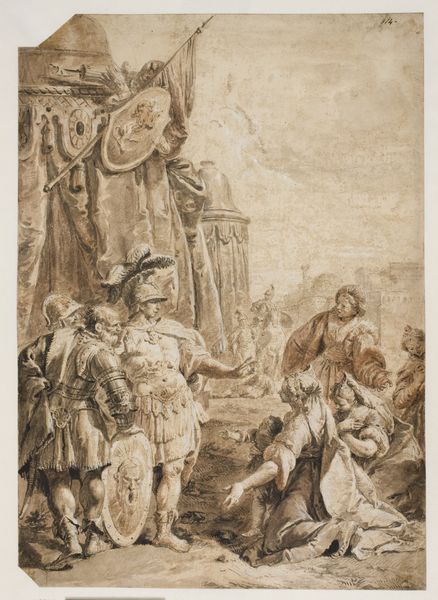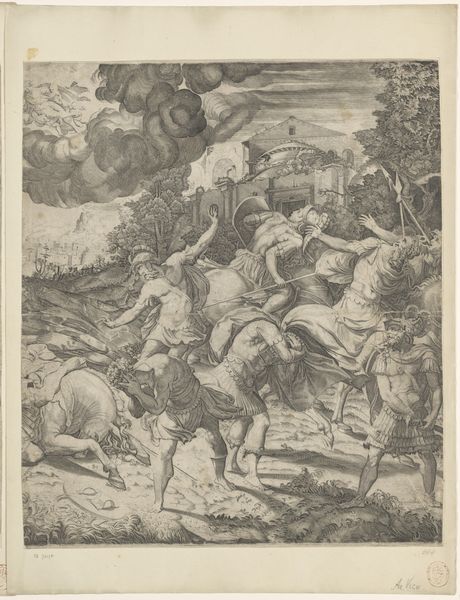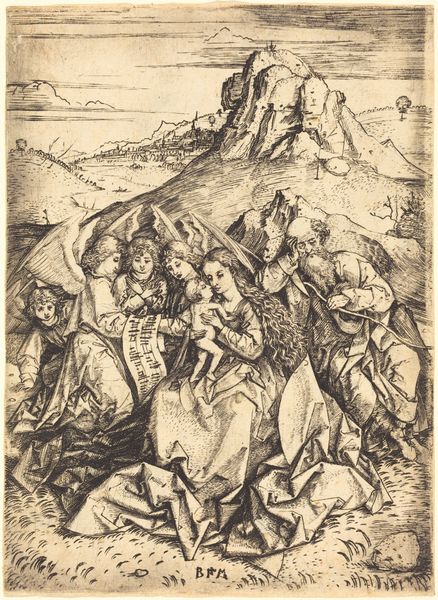
drawing, etching
#
drawing
#
baroque
#
animal
#
etching
#
landscape
#
men
#
genre-painting
Dimensions: sheet: 10 3/8 x 8 5/8 in. (26.4 x 21.9 cm)
Copyright: Public Domain
Curator: This etching, known as "Le Troupeau Traversant Le Ruisseau," or "The Herd Crossing the Stream," was created sometime between 1630 and 1683 by Nicolaes Berchem. It resides here at The Metropolitan Museum of Art. Editor: It strikes me as a carefully staged tableau vivant rather than a candid scene. The monochromatic texture makes the composition quite striking, despite its rustic theme. Curator: Note how Berchem masterfully uses the etching technique to create tonal variations and textures. Observe how each line is deliberately placed to define form, volume and spatial depth of field. It seems Berchem found aesthetic and financial reward when depicting Italianate landscapes. Editor: Yes, Italianate indeed! He capitalised on a real vogue amongst wealthy Northern Europeans eager to adorn their homes with impressions of the South. The idealised pastoral scene here presents a somewhat sanitised view of peasant life for urban tastes. Curator: Notice the careful balance and the symmetry in the layout. The animals crossing and their reflections create rhythmic horizontal patterns. This use of pattern guides the eye throughout the composition, creating a harmonious overall feel. It also plays on the concept of duality through mimetic mirror reflection, though its visual fidelity is inaccurate. Editor: Look at the clothing; a figure is seemingly robed in classical drapery like a biblical scene! I think this romantic idealisation of rural workers also played into emergent concepts of 'nationhood'. An artistic attempt to define shared ancestry in those living within the landscapes they romanticise. Curator: An interesting sociopolitical point that can certainly explain why Berchem often used precise, calculated arrangements of light and dark to evoke an almost dreamlike ambiance. A strategic tool to imbue the viewer with this artificial romanticism. Editor: Indeed, this reminds me that this image, at the end of the day, serves more than its mere aesthetic qualities or semiotic components. In truth, this art embodies so many ideals beyond just form and shape! Curator: Absolutely. The artwork highlights that understanding composition elements enhances the understanding of any image that communicates in and of itself without words. Editor: The analysis underscores the symbiotic relationship between aesthetics and societal implications. One doesn't exist entirely separate from the other.
Comments
No comments
Be the first to comment and join the conversation on the ultimate creative platform.
